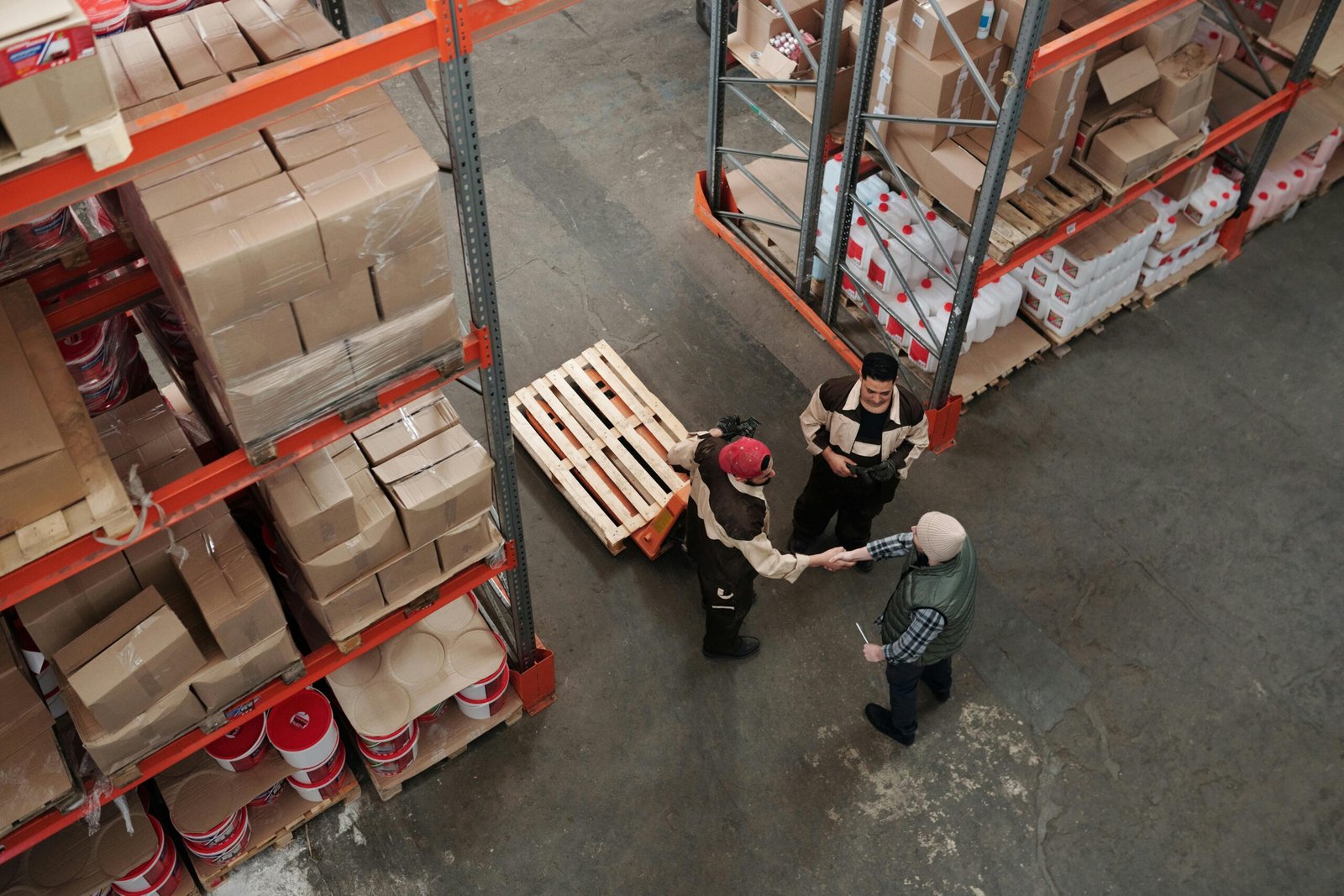Have you ever found yourself wondering if it’s possible to take out another lease while you’re still tied to one already? Maybe you’re running a business and the van you leased a year ago is no longer enough because you’ve taken on more work. Or perhaps you’re renting equipment for your operations and suddenly realize you need another machine to keep up with demand. It’s a situation many people face, and it leads to the same question: can you get a lease on top of an existing one?
Leasing usually comes with a set term, monthly payments, and clear conditions. So what happens if you still have an active lease but need access to more? Do companies even allow it? And if they do, what does it mean for your finances, your credit, and your ability to grow?
These are the kinds of questions that make “lease by lease” a topic worth exploring. This phrase is directly tied to the property law of the UK. But we will focus more on the industry of business finance, where people need vehicles, machinery, and technology to keep their businesses recent, quick to demand, and consistently moving.
The reason why both worlds collide in this guide is simply because they both share the same question for the two totally separate and different industries. Although, there is a bit of a connection when, for example, a business is involved in their rent and wants to have a longer lease secured because, based on their inferences on their financial performance, business will be good for more years than expected. We will dig deeper into this in the later sections.
What Does “Lease by Lease” Mean?
When it comes to property leases, because lease by lease is linked to rental properties, the law usually treats a new lease as replacing the old one, a process called surrender and re-grant. But, there are exceptions to this. If you and the landlord execute another lease that specifies that it is “subject to” the existing lease, then you end up having two leases at the same time. The first one is still valid, and this will then be called a concurrent lease.
- In property law, the general rule is that if a landlord grants a new lease of the same property to the same tenant, it automatically cancels (surrenders) the old lease and creates a fresh one (surrender and re-grant).
- However, there are exceptions:
- A concurrent lease (overlapping lease of the same premises running at the same time).
- A lease that is “subject to” the existing lease (so both can exist together).
- Reversionary leases (which extend the term into the future without cutting the current lease short).
- A concurrent lease (overlapping lease of the same premises running at the same time).
So the statement “lease by lease means accessing a second lease without cancelling the first” is only true in very specific circumstances, such as when a concurrent lease or subject-to arrangement is drafted.
Sample Scenario:

A cafe business owner rented a small shop under a five-year lease. However, two years into the lease, upon careful study of their finances and previous and current business performance, they concluded that their business will continue to operate well for the next 8 years at least. One of the main factors that drive them in this study was that their cafe was getting more and more known by locals and is becoming a landmark in their locale.
Now, because of this, they now have secured their product, which locals love; the promotion is also well taken care of, the prices of their products are competitive but there is one other element that they needed to secure, and that was the place. Now, in order to secure that final ‘P’ in the core of the marketing mix, they needed to bring this up to the landlord, which is to secure that place/location for as long as they need.
The issue: They have already secured a 5-year lease, but they need to secure at least 8, so to make sure that they get at least 8, they need to open this to 10 so it would be negotiable for both parties. If they ask the landlord for a new lease of the same shop, the law (property law) automatically treats the existing one as ceased (surrendered and re-granted). In short, the current one would be cancelled, and the new one would take its place.
The landlord and the tenant can choose a different route and not cancel the existing lease. Instead of cancelling the original lease, the landlord, if he agrees, can issue a concurrent lease. This is a new agreement for the same shop that is written to run “subject to” the first lease. Now, both the original and new leases are legally valid at the same time. This expires on its end date and gives the tenant long-term security.
For the business owner, this is a big advantage. They don’t lose the protection of their existing lease, but they also gain certainty for the years ahead. It allows them to commit to improvements, plan expansion, and operate with confidence that their shop won’t slip away when the old lease ends.
Connecting Lease by Lease to Business Finance
While lease by lease is a technical concept in property law, the underlying idea is very relevant for business owners. At its core, it’s about being able to hold more than one agreement at the same time, something that happens often in the world of business finance.
For example, a company might already be paying for a leased machine but needs another to boost production. Or a business owner with a leased van may realise they need a second vehicle to take on new contracts. In these situations, the process isn’t called “lease by lease” anymore, it’s simply about entering into a new, separate finance agreement alongside the existing one. Each lease stands independently, but together they give the business the flexibility to scale up when opportunities arise.
When it comes to asset finance, for example, leasing a van, machinery, or equipment for your business, the rules are more flexible. In these cases, ‘lease by lease’ often refers to simply having more than one active lease at once, provided the finance company approves it based on your ability to make the payments.
Asset finance providers help businesses secure the equipment, vehicles, or technology they need without having to wait for an old lease to expire. And if leasing isn’t the best route, we also offer business loans as an alternative, giving you the freedom to fund growth in the way that best suits your operations.
Whether it’s all about securing your premises through a property lease or expanding your fleet through asset finance, the principle is the same: having access to what you need, when you need it, without unnecessary delays.
This distinction matters because while property leases are bound by strict legal rules, asset finance is more flexible. For businesses, that flexibility can make it easier to grow, adding new assets when needed, without waiting for the old lease to end.
Taking Another Lease While Already in One
In the business world, the more loans a company has, the better it is performing financially because they would not be likely approved if they didn’t have the capacity to pay for it. Businesses will need extra machinery (agricultural, construction, etc.), IT equipment, or just additional vehicles for their company.
This naturally raises questions: Do you need to wait for the first lease to end? Can you work with different finance companies? What if you fall behind on payments?
To make things clear, let’s answer the most common questions business owners have when it comes to taking another lease while an existing one is still active.
Do I need to finish my current lease before I can start a new one?
No, you don’t have to wait for your current lease to end before starting another one. In asset finance, each lease is treated as a separate agreement. That means if you already have a lease on a van, for example, you can apply for another lease on a second van, a piece of machinery, or even office equipment, without having to close the first lease.
This is up to you whether you know your business can afford the additional repayments without issues. If your existing lease has been managed well and the payments are made on time and there is no history of defaults, this is actually ideal, as it shows lenders you’re a reliable borrower.
Can lease by lease apply to both business and personal leases?
Yes, but it is not called lease by lease but simply lease on top of another lease. If you are the business owner and the business structure is either a partnership or a sole proprietorship, where the business owner and the business is not considered as separate entities then they still can have multiple leases at the same time, even if for personal and business purposes. Just as long as the lenders deem you a capable borrower upon inspection/credit check, then you are good to go.
The same goes for limited-liability company; these are entirely different because the owners are separate entities from their businesses. Meaning the businesses are only assessed on their borrowing capacity, and the owners are assessed separately from their businesses. They can also have multiple leases at the same time.
What happens if I default on one of the leases?
For businesses, the leases are treated as separate from each other. Defaulting will result in having the assets repossessed. The co-signers are also responsible for the entire obligations, including damages and other liabilities.
In the case of the sample scenario earlier, the landlord can pursue any one of the signers of the legally binding lease document (concurrent or re-grant) into paying the full payment. Should you be a business owner with issues regarding your location/place of business? You can get evicted, have your credit score affected and have trouble securing the next good location.
Can I have lease-by-lease agreements with different companies, or only the same one?
You’re not limited to just one finance company. Businesses can (and often do) hold multiple leases with different providers at the same time. For instance, you might lease vehicles from a specialist motor finance company while arranging equipment leasing through another lender.
That said, many businesses choose to stay with the same finance company if they’ve built a good track record. Having a solid payment history with one provider can sometimes make it quicker and easier to get approved for another lease. But you always have the option to shop around for better rates, terms, or flexibility elsewhere.
Does one lease on top of another lease affect my chances of getting future credit or finance?
Multiple leases won’t harm your chances as long as they’re well-managed. The danger lies only in overcommitting. Responsible leasing today can build credibility for tomorrow’s financing needs. If you keep up with payments and maintain a strong repayment history, having multiple leases can actually strengthen your business credit profile. It shows lenders that you can responsibly handle financial commitments, which may improve your chances of approval for future finance.
On the other hand, if taking on too many leases stretches your cash flow thin, lenders might view this as a risk. When reviewing new applications, they’ll look at your overall financial health—comparing your income, expenses, and existing obligations to see if there’s enough room for another lease or loan.
Are multiple leases available for startups or only established businesses?
Startups can access multiple lease agreements, but the process is usually a little more challenging compared to established businesses. Since new businesses don’t always have a strong financial history, lenders may look for extra reassurance before approving multiple leases. This could mean:
- Personal guarantees from the business owner
- A larger upfront deposit
- Evidence of contracts, orders, or projected revenue to show repayment ability
For established businesses, the track record of successful repayments often makes it easier to take on more than one lease. But startups aren’t excluded—they just need to demonstrate that they have the cash flow and stability to manage the commitments.









